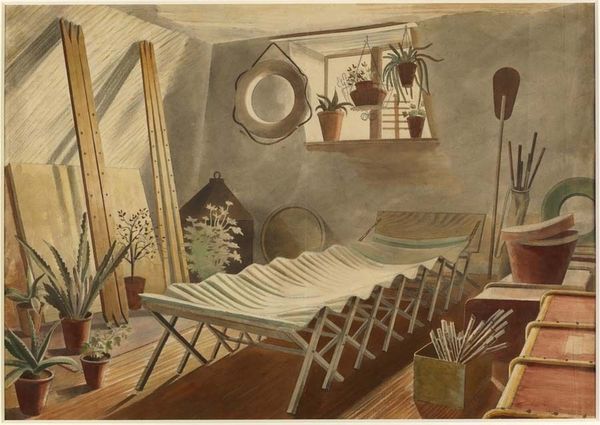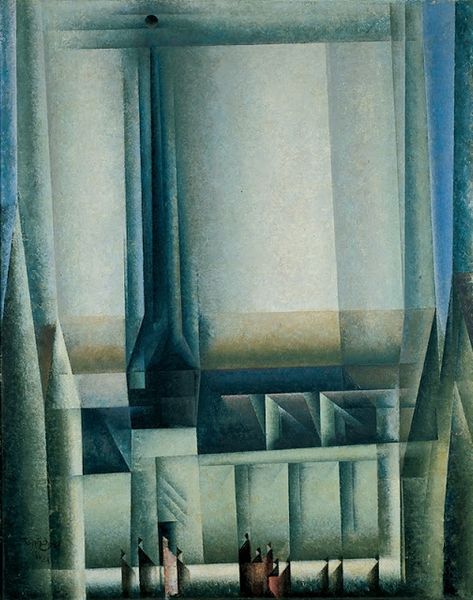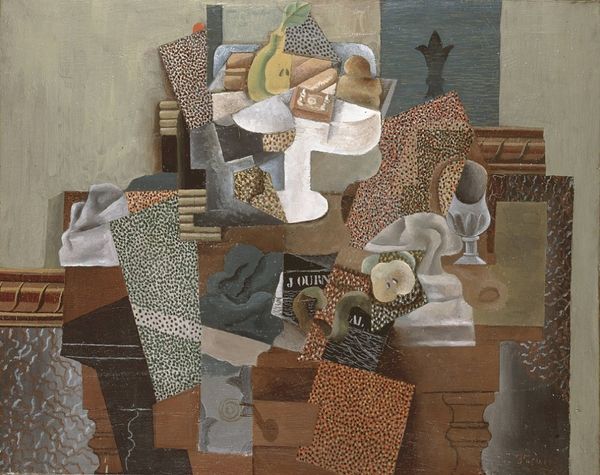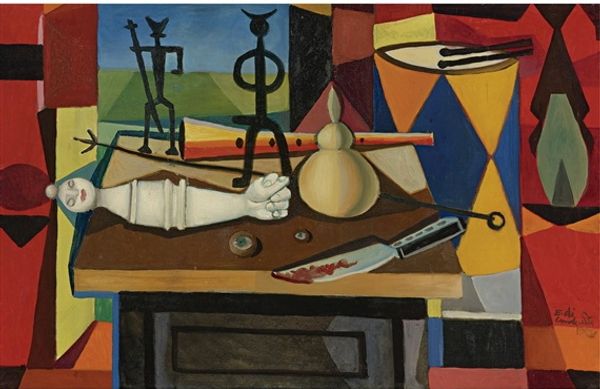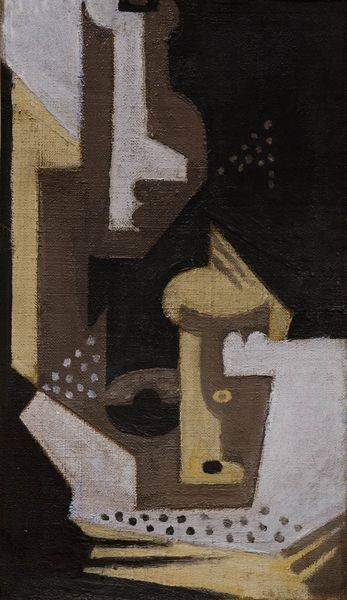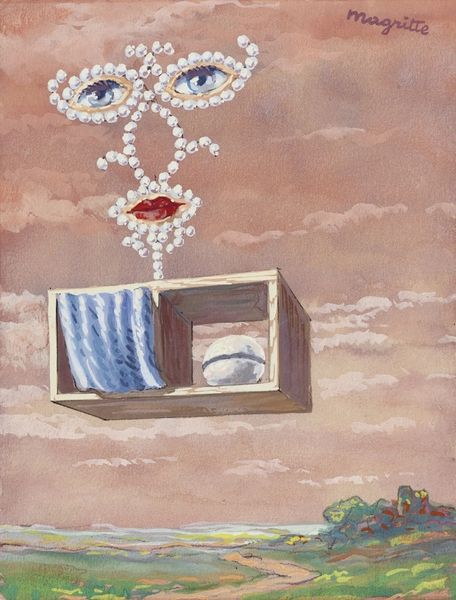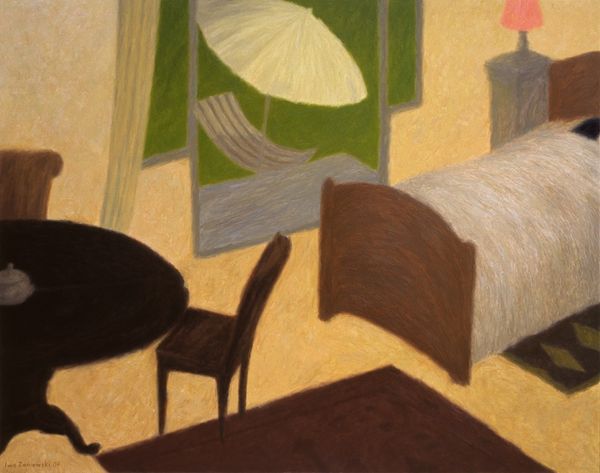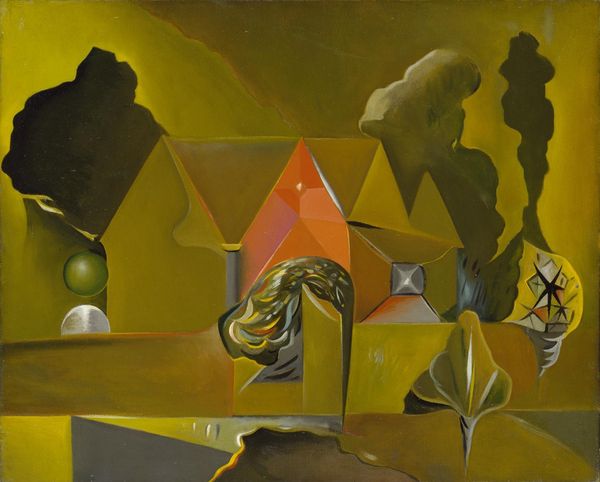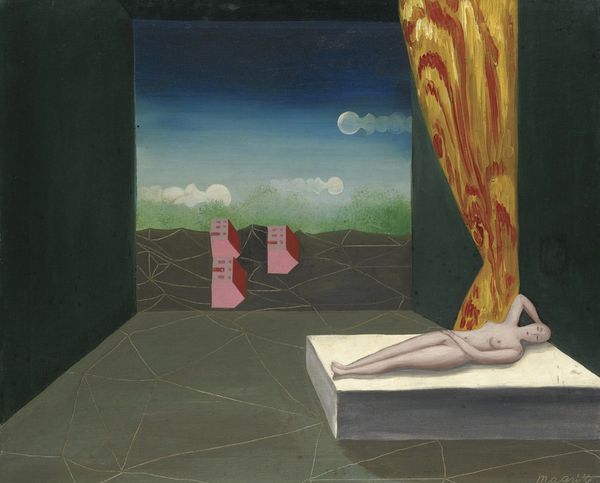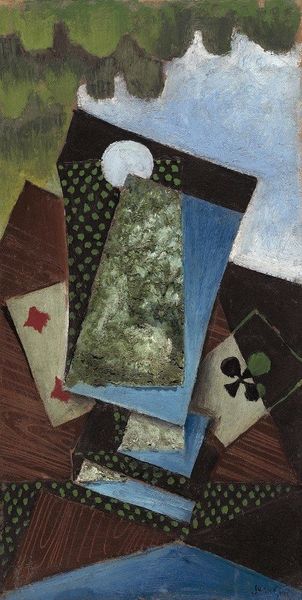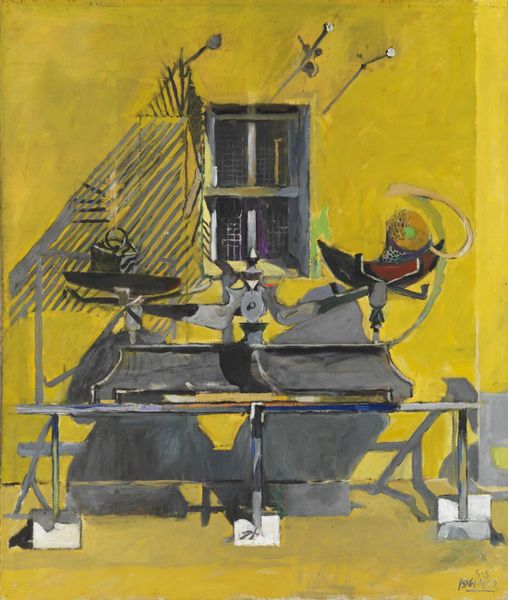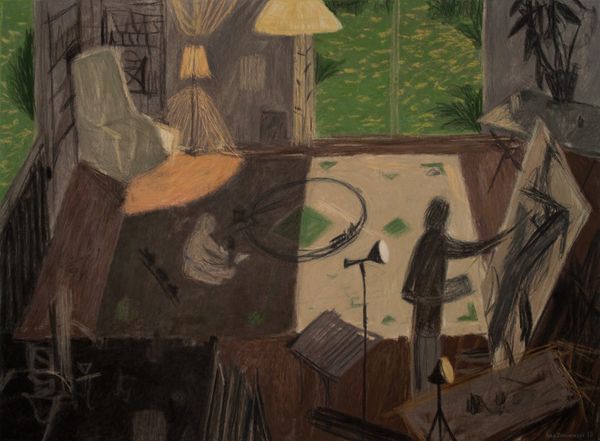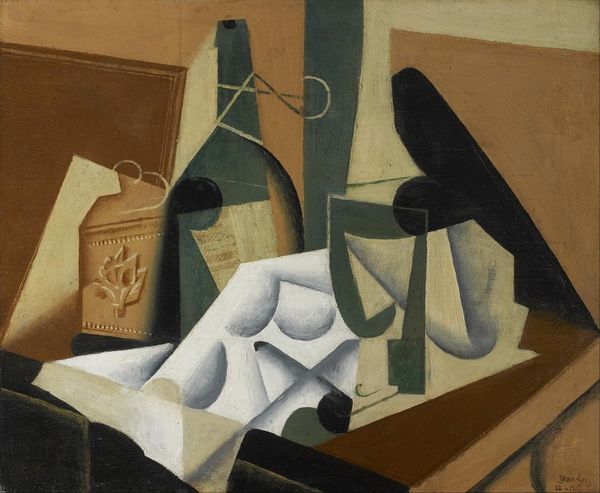
Dimensions: support: 921 x 654 mm frame: 1012 x 745 x 58 mm
Copyright: © ADAGP, Paris and DACS, London 2014 | CC-BY-NC-ND 4.0 DEED, Photo: Tate
Editor: This is Pierre Roy's "A Naturalist’s Study," currently at the Tate. The composition is quite striking, with the train visible through an opening, the eggs, the wheel. How would you interpret the artist's use of this peculiar arrangement? Curator: The painting presents a visual puzzle, privileging internal structure over external narrative. Consider the precise rendering of each object, demanding attention. The linear perspective, though seemingly coherent, subtly distorts spatial relationships, disrupting conventional readings. Editor: So, it is more about how we see than what we see? Curator: Precisely. The juxtaposition of disparate elements invites contemplation on the very nature of representation. How do these objects relate formally, if not conceptually? Editor: I see that now; the painting's strength lies in its formal tensions. Curator: Indeed. And it invites us to consider how meaning arises from these formal relationships.
Comments
tate 8 months ago
⋮
http://www.tate.org.uk/art/artworks/roy-a-naturalists-study-t01182
Join the conversation
Join millions of artists and users on Artera today and experience the ultimate creative platform.
tate 8 months ago
⋮
Like several of the Surrealists, with whom he exhibited in 1925, Pierre Roy used a precise style to portray an uncertain reality. A Naturalist’s Study alludes to the nineteenth-century concern with scientific classification and order. However, the relationship between these curious objects, including a paper snake and a string of eggs, remains mysterious. The artist’s son described this work as portraying a strangely motionless world: ‘Life seems to have stopped and become fixed like the locomotive itself in front of a chance or imaginary obstacle’. Gallery label, December 2005
